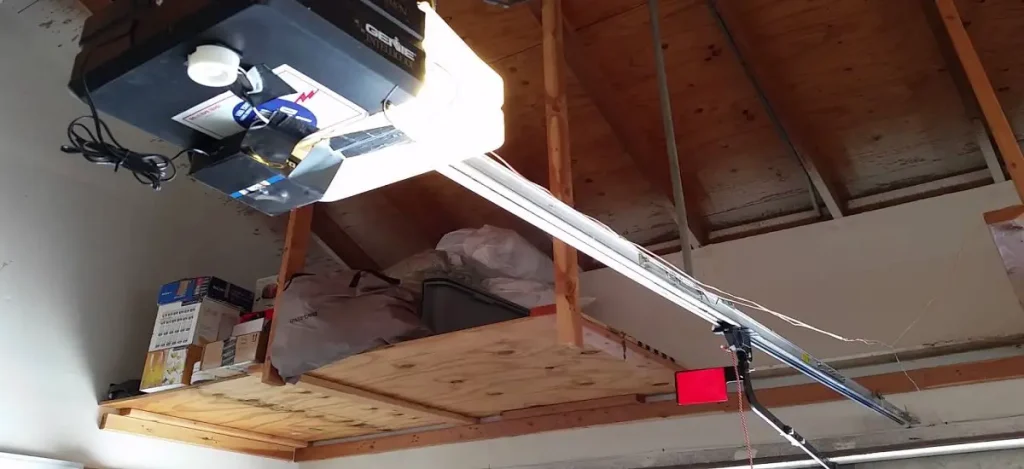Picture this scenario: you’re running late for work, and as you press the button to open your garage door, you hear an unsettling buzzing sound, but the door remains stubbornly closed. It’s a frustrating and inconvenient situation that many homeowners have encountered at some point. If you’re facing the issue of a garage door opener buzzes but won’t open, don’t worry; you’re not alone. In this article, we will explore the common causes behind this problem and provide you with a step-by-step troubleshooting guide to get your garage door functioning smoothly again.

Understanding Your Garage Door Opener
Before delving into troubleshooting, it’s essential to understand the basic components of a garage door opener. A typical garage door opener consists of a motor, a drive system (usually a belt, chain, or screw), and a control mechanism (remote or wall-mounted keypad). When you press the button to open the garage door, the motor engages, and the drive system moves the door along its track.
Common Causes of a Buzzing Garage Door Opener
- Blocked or Misaligned Photoelectric Sensors: The photoelectric sensors on either side of your garage door are designed to detect obstacles and prevent the door from closing on them. If these sensors are blocked or misaligned, the opener may buzz but won’t open the door.
- Broken Torsion Spring: The torsion spring plays a crucial role in counterbalancing the weight of the garage door. If this spring breaks, it can lead to a buzzing sound, and the door won’t open properly.
- Disconnected or Damaged Garage Door Opener Wiring: Wiring issues can also be a common culprit. Check for any disconnected or damaged wires in the opener’s circuitry.
- Lack of Lubrication: Over time, the moving parts of a garage door opener can become dry and need lubrication. Without proper lubrication, the opener may struggle to open the door, resulting in a buzzing noise.
- Limit Switch Problems: The limit switches on the garage door opener determine how far the door should travel when opening or closing. If these switches are incorrectly set or malfunctioning, the opener may buzz and fail to open the door fully.
Troubleshooting Steps
Now that we’ve identified some common causes let’s go through a step-by-step troubleshooting guide to resolve the issue of a garage door opener buzzing but not opening.
Step 1: Check the Photoelectric Sensors
Start by examining the photoelectric sensors on either side of the garage door. Ensure they are clean and properly aligned. Wipe away any dirt or debris that may be blocking the sensor’s beam. If the sensors are misaligned, adjust them until the indicator lights on both sensors are solid.
Step 2: Test the Torsion Spring
Manually lift the garage door to see if it moves smoothly. If it feels heavy or is difficult to lift, there may be an issue with the torsion spring. It’s advisable to call a professional garage door technician to replace a broken torsion spring, as it can be dangerous to handle on your own.
Step 3: Inspect the Wiring
Carefully examine the wiring connected to your garage door opener. Look for any loose or damaged wires and connections. If you find any issues, consider calling a technician to repair or replace the wiring.
Step 4: Lubricate Moving Parts
Apply lubricant to the moving parts of your garage door opener, including the chain, belt, or screw drive. This can help reduce friction and noise, allowing the door to open smoothly.
Step 5: Check the Limit Switches
Inspect the limit switches on your garage door opener. Ensure that they are properly set to control the door’s open and close positions. Consult your opener’s manual for guidance on adjusting the limit switches if necessary.
Conclusion
A garage door opener buzzes but won’t open can be a frustrating problem, but with the right troubleshooting steps, you can often diagnose and fix the issue. Whether it’s a simple sensor misalignment, a broken torsion spring, wiring problems, or lubrication needs, addressing these common causes can get your garage door back in working order. If you’re unsure about any of the troubleshooting steps or if the issue persists, it’s always a good idea to seek professional assistance from a garage door technician. Remember that safety should be a top priority when dealing with garage door opener issues, and don’t hesitate to reach out for expert help when needed.



Leave a Reply